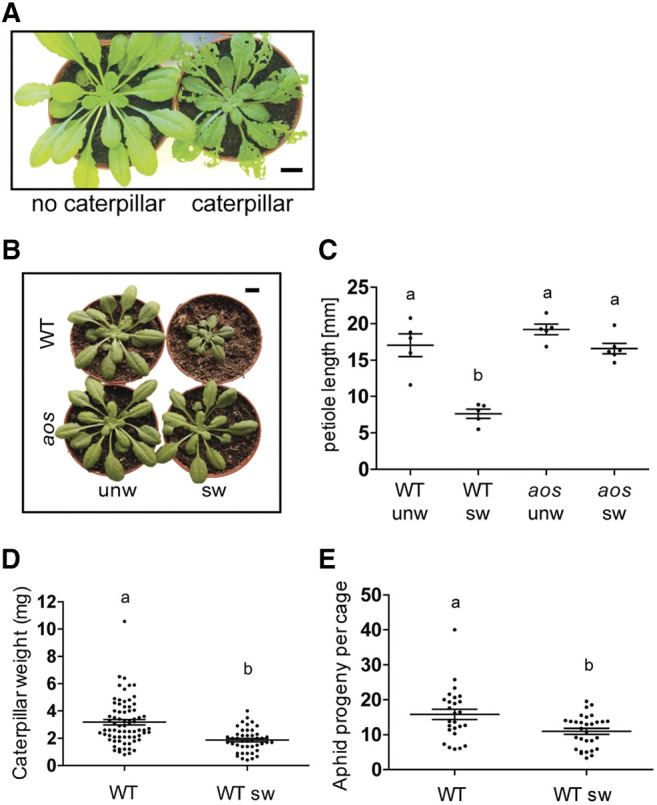Figure 1.

Enhanced defense in serially wounded plants. A, Rosette morphology of undamaged wild-type (WT) plant and plant after 11 d of S. littoralis feeding. Scale bar = 1 cm. B, Rosette morphology of wild type and aos after serial wounding. The background was digitally rendered in white in the image. unw, Unwounded; sw, serially wounded. Scale bar = 1 cm. C, Petiole length after serial wounding in wild type and aos mutant. The mean petiole length of leaves number 6, 7, and 8 in each plant is counted as one biological replicate. Bars represent the means (±sem), n = 5 to 6 D, Biomass of S. littoralis after 11 d feeding on unwounded wild type or serially wounded wild type (WT sw). Bars are means (±sem) of three combined experiments. Wild type, n = 73; wild type sw, n = 44. E, Reproductive success of cabbage aphids (B. brassicae) on unwounded or serially wounded plants. Aphid success was monitored 14 d after placing nymphs on plants. Bars are means (±sem) of three combined experiments; wild type, n = 26; wild type sw, n = 30. Lowercase letters indicate significant difference as determined by Tukey’s HSD test (P < 0.001).
